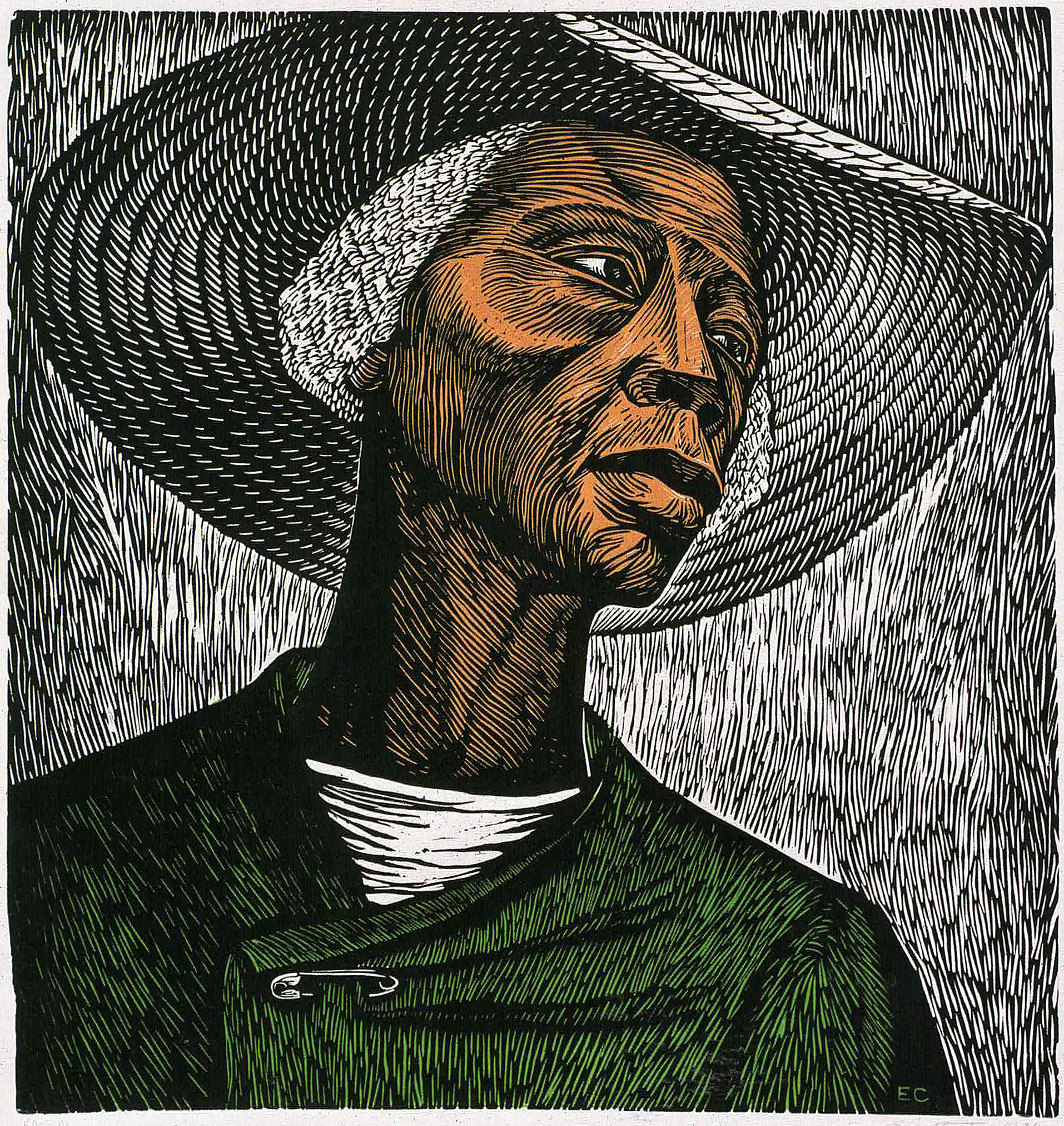 By the time he entered Howard University’s art education program, Earl Hooks had acquired significant skills that would supplement his studies and the work he would do in the future. Hooks’s mentors at Howard included James Porter, James L. Wells, and Lois Mailou Jones, all, of course, under the auspices of James V. Herring. It was while volunteering at Freedman’s Hospital in the department of occupational therapy that he developed his pottery skills. The hospital was well stocked with equipment for throwing and firing clay and Hooks spent as much time as he could there learning the craft of ceramics.
By the time he entered Howard University’s art education program, Earl Hooks had acquired significant skills that would supplement his studies and the work he would do in the future. Hooks’s mentors at Howard included James Porter, James L. Wells, and Lois Mailou Jones, all, of course, under the auspices of James V. Herring. It was while volunteering at Freedman’s Hospital in the department of occupational therapy that he developed his pottery skills. The hospital was well stocked with equipment for throwing and firing clay and Hooks spent as much time as he could there learning the craft of ceramics.
Upon graduation, he began a teaching stint at Shaw University in North Carolina, where he found the abundance of natural clays provided excellent material for his craft. It was here that his work was noticed by Harold Brennan, administrator for the School for American Craftsmen, Rochester, NY. Hooks was invited to attend the school’s graduate division. He attended the Rochester Institute of Technology in 1954 and the School of American Craftsman in 1955.
In 1955, Hooks headed to Gary, Indiana. Despite his attempt to establish the Studio A Gallery for both white and black artists in the city, the venture folded within the first year. Hooks went on to work as a teacher and art consultant in the Gary public school system. In addition to teaching, Hooks showed his work extensively, including the 21st, 23rd, and 24th Ceramic National Exhibitions held at the Everson Museum of Art. Hooks presented a stoneware ashtray with gray green mat glaze (#103) at the 21st Ceramic National Exhibition (1960). He presented Stoneware Fruit Forms (#225) at the 23rd Ceramic National Exhibition (1964)- this work is now in the collection of Fisk University, TN and is illustrated in Ceramics: A Potter’s Handbook, Glenn C. Nelson, p. 172. Hooks presented Life Form No. 2 (#31), described as stoneware, hand built, black slip with black slip trailing, in the 24th Ceramic National Exhibition held in 1966.
Cedric Dover, author of American Negro Art (1960), had this to say about Earl Hooks and his work:
His vivid transformations of biological shapes have a vigor and movement, increased by the feeling they give of the linked variety of organic growth, suggestive of American Negro Art as a whole – properly so, for pottery is an early art and a sure guide to the sensibilities of the people.
At the invitation of David Driskell, Hooks went to Tennessee in 1967 to join the fine arts faculty at Fisk University, where he remained until 1997.




